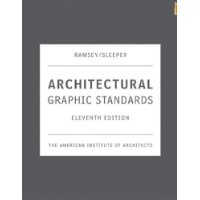
基本信息出版社:Wiley & Sons, Inc.
页码:1120 页
出版日期:2007年03月
ISBN:0471700916
条形码:9780471700913
装帧:精装
正文语种:英语
外文书名:建筑图形标准
内容简介 在线阅读本书
Since 1932, the ten editions of Architectural Graphic Standards have been referred to as the "architect′s bible." From site excavation to structures to roofs, this book is the first place to look when an architect is confronted with a question about building design. With more than 8,000 architectural illustrations, including both reference drawings and constructible architectural details, this book provides an easily accessible graphic reference for highly visual professionals.
To celebrate seventy–five years as the cornerstone of an industry, this commemorative Eleventh Edition is the most thorough and significant revision of Architectural Graphic Standards in a generation. Substantially revised to be even more relevant to today′s design professionals, it features:
An entirely new, innovative look and design created by Bruce Mau Design that includes a modern page layout, bold second color, and new typeface
Better organized–– a completely new organization structure applies the UniFormat(r) classification system which organizes content by function rather than product or material
Expanded and updated coverage of inclusive, universal, and accessible design strategies
Environmentally–sensitive and sustainable design is presented and woven throughout including green materials, LEEDS standards, and recyclability
A bold, contemporary new package––as impressive closed as it is open, the Eleventh Edition features a beveled metal plate set in a sleek, black cloth cover
Ribbon Markers included as a convenient and helpful way to mark favorite and well used spots in the book
All New material
Thoroughly reviewed and edited by hundreds of building science experts and experienced architects, all new details and content including:
new structural technologies, building systems, and materials
emphasis on sustainable construction, green materials, LEED standards, and recyclability
expanded and updated coverage on inclusive, universal, and accessible design strategies
computing technologies including Building Information Modeling (BIM) and CAD/CAM
new information on regional and international variations
accessibility requirements keyed throughout the text
new standards for conducting, disseminating, and applying architectural research
New and improved details
With some 8,500 architectural illustrations, including both reference drawings and constructible architectural details, Architectural Graphic Standards continues to be the industry′s leading, easily accessible graphic reference for highly visual professionals.
编辑推荐 Amazon.com Review
Celebrating seventy-five years of defining architectural standards, Wiley is proud to introduce the most thorough revision of Architectural Graphic Standards in a generation. This anniversary edition of the indispensable architect’s tool features an entirely new design created by Bruce Mau Design, improved organization, and expanded and all-new content covering contemporary issues.
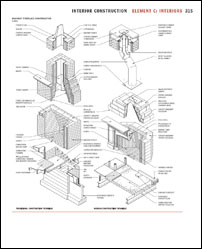
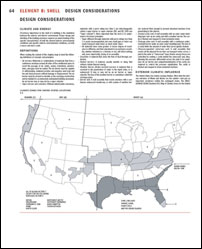
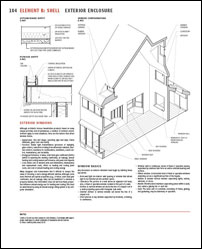
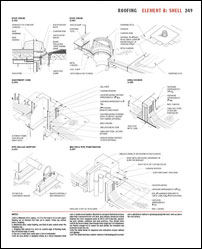
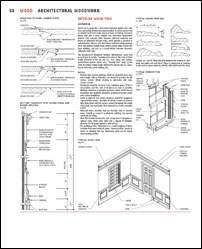
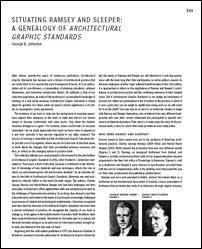
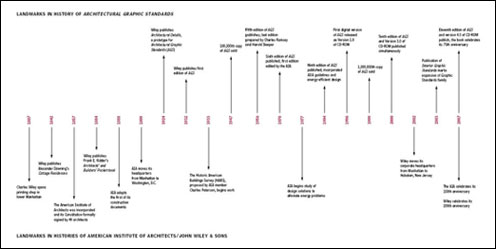
Review
"Any discipline is lucky to have its bible, a book so embracing and lucid it helps to define and guide a profession or industry for generations. In houses and buildings, the bible is Architectural Graphic Standards...this venerable reference will continue to be not only relevant but remarkably prescient for many buildings to come." (Old-House Journal, Sept/Oct 2007)
"Architectural Graphic Standards 11th edition continues a 75-year tradition of offering concise text and descriptive graphics in a basic design handbook for architects." (Fabric Architecture; Sep/Oct 2007)
"The practice of Architectural Design is continually changing and this book gives examples of what is considered good practice at this time. I recommend this to everyone doing architectural design; this book is a tool, not a pretty book to leave on the table for visitors to see." (Orange Bytes, (North Orange County Computer Club), August 2007)
"Architectural Graphic Standards--more a professional handbook than a guide to graphic conventions--represents the most ambitious revision and overhaul in the publication's history." (Library Journal; 8/1/07)
"This year sees the publication of a new, improved Architectural Graphic Standards. Since Ramsey and Sleeper's last edition in 1956, the book has grown with rapidly evolving technologies, and the sporadic publishing pace of its early years has kept pace with the changes. The profession is evolving at an ever-greater pace, but Architectural Graphic Standards is keeping up its role as the franchise player." (Architect Magazine, June 2007)
"Any discipline is lucky to have its bible, a book so embracing and lucid it helps to define and guide a profession or industry for generations. In houses and buildings, the bible is Architectural Graphic Standards...this venerable reference will continue to be not only relevant but remarkably prescient for many buildings to come." (Old-House Journal, Sept/Oct 2007) "Architectural Graphic Standards 11th edition continues a 75-year tradition of offering concise text and descriptive graphics in a basic design handbook for architects." (Fabric Architecture; Sep/Oct 2007) "The practice of Architectural Design is continually changing and this book gives examples of what is considered good practice at this time. I recommend this to everyone doing architectural design; this book is a tool, not a pretty book to leave on the table for visitors to see." (Orange Bytes, (North Orange County Computer Club), August 2007) "Architectural Graphic Standards--more a professional handbook than a guide to graphic conventions--represents the most ambitious revision and overhaul in the publication's history." (Library Journal; 8/1/07) "This year sees the publication of a new, improved Architectural Graphic Standards. Since Ramsey and Sleeper's last edition in 1956, the book has grown with rapidly evolving technologies, and the sporadic publishing pace of its early years has kept pace with the changes. The profession is evolving at an ever-greater pace, but Architectural Graphic Standards is keeping up its role as the franchise player." (Architect Magazine, June 2007)